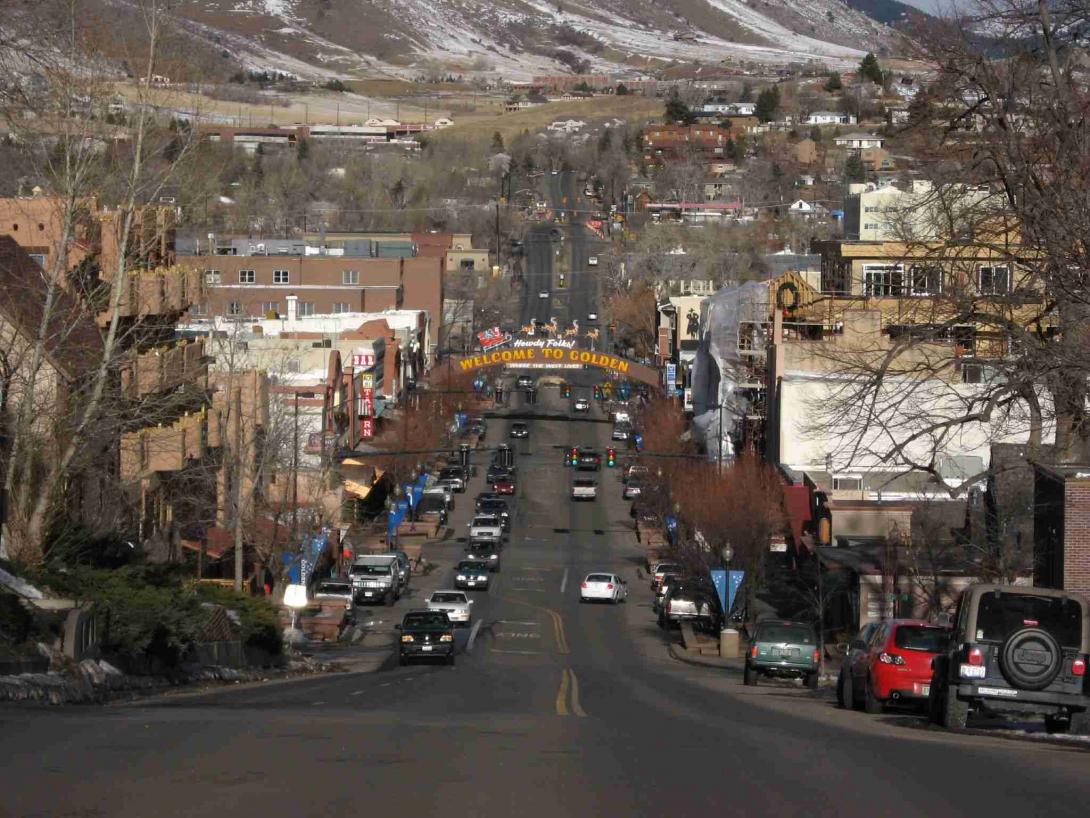Golden
Full Article
Now a small pocket city in the suburbs of Denver, Golden was once the most powerful city in the state and the capital of the Colorado Territory. Today, Golden is known for the Coors Brewery and the Colorado School of Mines and as the seat of Jefferson County. Over the years, a variety of industries have thrived in Golden.
In 1859, with the discovery of gold in Clear Creek, miners flooded into the region and displaced the local Ute, Arapaho, and Cheyenne Native Americans who had lived in the foothills for generations. Golden, originally named Golden City, is believed to be named after Tom Golden, an early settler and miner. Rather than becoming a mining town, Golden City quickly became a supply center for miners going into the mountains and a transportation hub for wagons. The geography of Golden City—located at the mouth of the Clear Creek, on the last flat space before entering the mountains—was crucial to its success in the early days of Colorado. The location enabled a variety of industries—including agriculture, mining and manufacturing—to thrive.
From 1862 to 1867, a time when industry flourished, Golden City was the capital of the Colorado Territory. By the 1870s, Golden was home to a cigar factory, a glass plant, a candy factory, a paper mill, stone quarries, multiple smelters, flour mills, and several local coal mines. In addition, the Colorado Central Railroad had finally reached Golden, turning the city into the gateway to the Rocky Mountains.
It was during this time of rapid industrialization that Adolph Coors, a German immigrant, started the Coors Brewery with one of his partners. Founded in 1873, Coors was one of the earliest breweries in Colorado. Originally a small stone building, it grew to be an industrial complex that is now the largest single-source brewery in the world. Coors eventually branched out into porcelain and ceramic production of cooking utensils, chemical porcelain and flatware—all of which sustained the company during the Prohibition era. Tours of the brewery are a popular tourist attraction in present-day Golden.
While industry was thriving in the 1870s, Golden was also experiencing growth as an intellectual hub of Colorado. Three colleges were built: Jarvis Hall, Matthews Hall, and Colorado School of Mines. Founded in 1873–74 by Bishop George M. Randall, the School of Mines is the only mining school that still exists. Specializing in engineering and applied science, it is recognized as a world-class institution.
In 1876, when Colorado became a state, Denver replaced Golden as the capital. While many locals were outraged, industry in Golden was largely unaffected. The city remained the seat of Jefferson County and the county built an impressive new courthouse in 1990. The National Renewable Energy Laboratory (NREL) was also built in Golden during the energy crisis of the 1970s. The city has since expanded and remains a center for industry, education, and now tourism, with sites such as the kayak park at Clear Creek. It has preserved its small-town feel even as it is now part of the expanding Denver suburbs.






